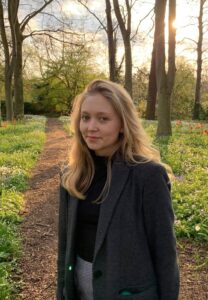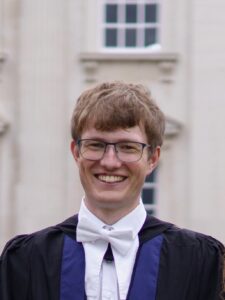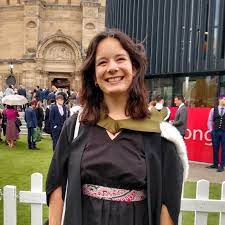Gavin Melaugh, Group Leader
I’m a Chancellor’s fellow joint between the School of Physics and Astronomy and the School of Engineering. In my group, we use a combination of experiments, microscopy, and computer simulations to understand the collective behaviour of microorganisms in the natural environment, and in biotechnological and clinical settings . I’ve been a member in the core team of the National Biofilms Innovation Centre since it’s formation in 2018. In Physics, I’m course organiser for Research Methods in Physics (3rd year course) and I also teach Biological Physics (4th and 5th year). Before joining the University of Edinburgh, I did a computational physics PhD at Queen’s University Belfast, where our team designed and synthesised the world’s first ever porous liquids.
Hannah Johns, PhD student
I’m a PhD student on the Wellcome Integrative Cellular Mechanisms PhD programme. Split between Gavin Melaugh and Lynne Regan’s lab, I work on designing and controlling multicellular assemblies of E.coli through synthetic adhesion constructs on their surface. Alongside this, I use computational modelling to aid in the prediction and understanding of their morphology. Before coming to Edinburgh, I completed my undergraduate degree in Natural Sciences at the University of Cambridge and then worked at the University of York as a research trainee in Professor Jeremy Mottram’s group.
Holly Bridge, PhD Student
I’m a PhD student working on developing individual-based models for filamentous bacteria found in wastewater treatment. In particular, I’m investigating how the growth and division of different filamentous morphologies influence the physics of floc formation and attempting to understand the emergence of interfloc bridging and how it adversely impacts phase separation and settleability.
Joseph Knight, PhD student
Anne-Maelle Penot, PhD student
Francois De Tournemire, PhD Student
I study the influence of extra-cellular DNA on bacterial motility, with a special interest in the early stages of biofilm formation. I use experiments involving lambda DNA and Differential Dynamic Microscopy, but also a computational framework called Multi-Particle Collision Dynamics
